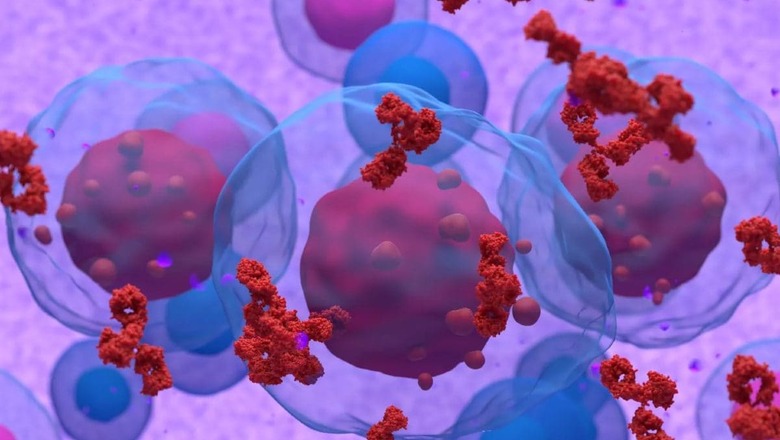
views
A type of cancer, multiple myeloma affects plasma cells in the bone marrow. Considered to be the second most common type of blood cancer after leukaemia, multiple myeloma is characterized by abnormal growth and accumulation of plasma cells in the bone marrow and other parts of the body, leading to various health complications. Multiple myeloma can cause a variety of symptoms, including bone pain, weakness, and frequent infections. Treatment for multiple myeloma depends on the stage of the disease and the overall health of the patient.
Below given are the causes, symptoms, and treatment options for multiple myeloma:
Causes:
The exact cause of multiple myeloma is not yet fully understood, but researchers have identified factors that increase the likelihood of developing this disease.
- Age: This disease is more common in people over the age of 60.
- Gender: Men are more likely to develop multiple myeloma than women.
- Genetics: Having a family history of multiple myeloma or other blood cancers can increase the risk of developing the disease.
Symptoms:
The symptoms of multiple myeloma can vary widely from person to person, and some people may not experience any symptoms at all in the early stages of the disease. Common symptoms of multiple myeloma include:
- Bone pain: This is the most common symptom of multiple myeloma, and it often affects the back, ribs, and hips.
- Weakness and fatigue: Multiple myeloma can cause anemia, which leads to weakness and fatigue.
- Frequent infections: People with multiple myeloma have weakened immune systems, which makes them more susceptible to infections.
- Kidney problems: Multiple myeloma can cause damage to the kidneys, leading to problems with urination and fluid balance.
- Numbness or tingling: Multiple myeloma can cause nerve damage, which can lead to numbness or tingling in the hands and feet.
Treatment:
Treatment for multiple myeloma depends on the stage of the disease and the overall health of the patient. Common treatments for the disease include:
- Chemotherapy: This is the most common treatment for multiple myeloma, and it involves the use of drugs to kill cancer cells.
- Stem cell transplant: This procedure involves replacing damaged or destroyed bone marrow with healthy stem cells from a donor.
- Radiation therapy: This treatment involves the use of high-energy radiation to kill cancer cells.
- Immunomodulatory drugs: These drugs help to boost the immune system, which can help to fight off cancer cells.
In addition to these treatments, people with multiple myeloma may also need supportive care to manage their symptoms and improve their quality of life. This can include pain management, physical therapy, and psychological support.
Read all the Latest Lifestyle News here



















Comments
0 comment